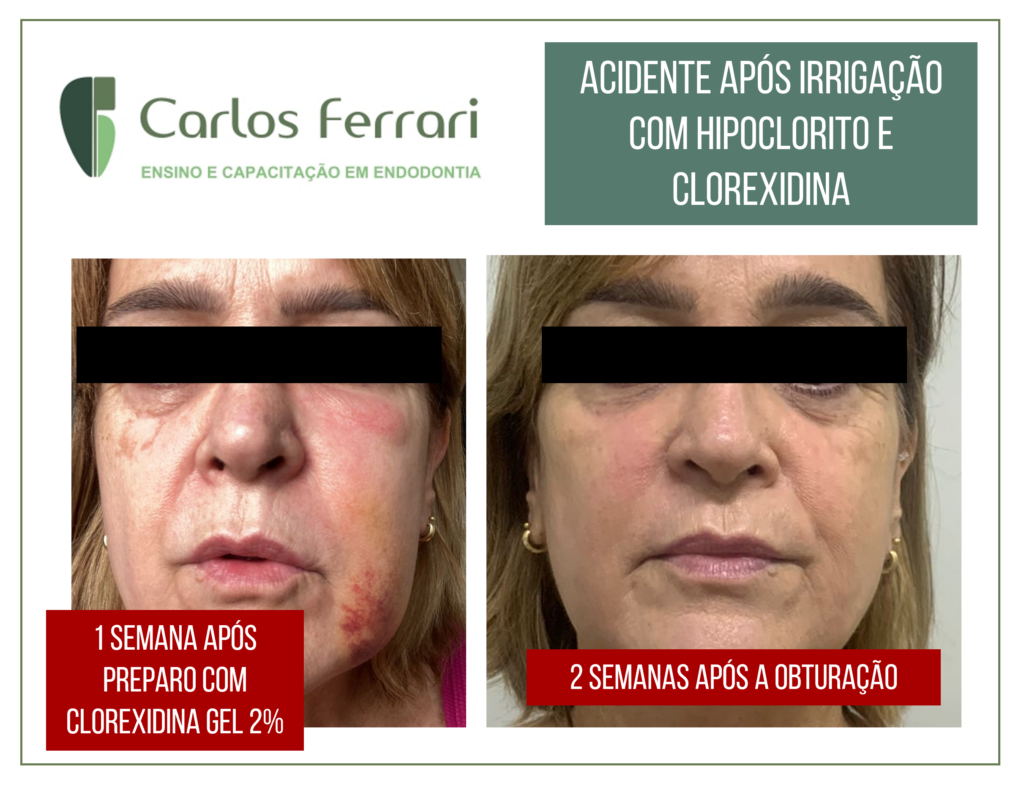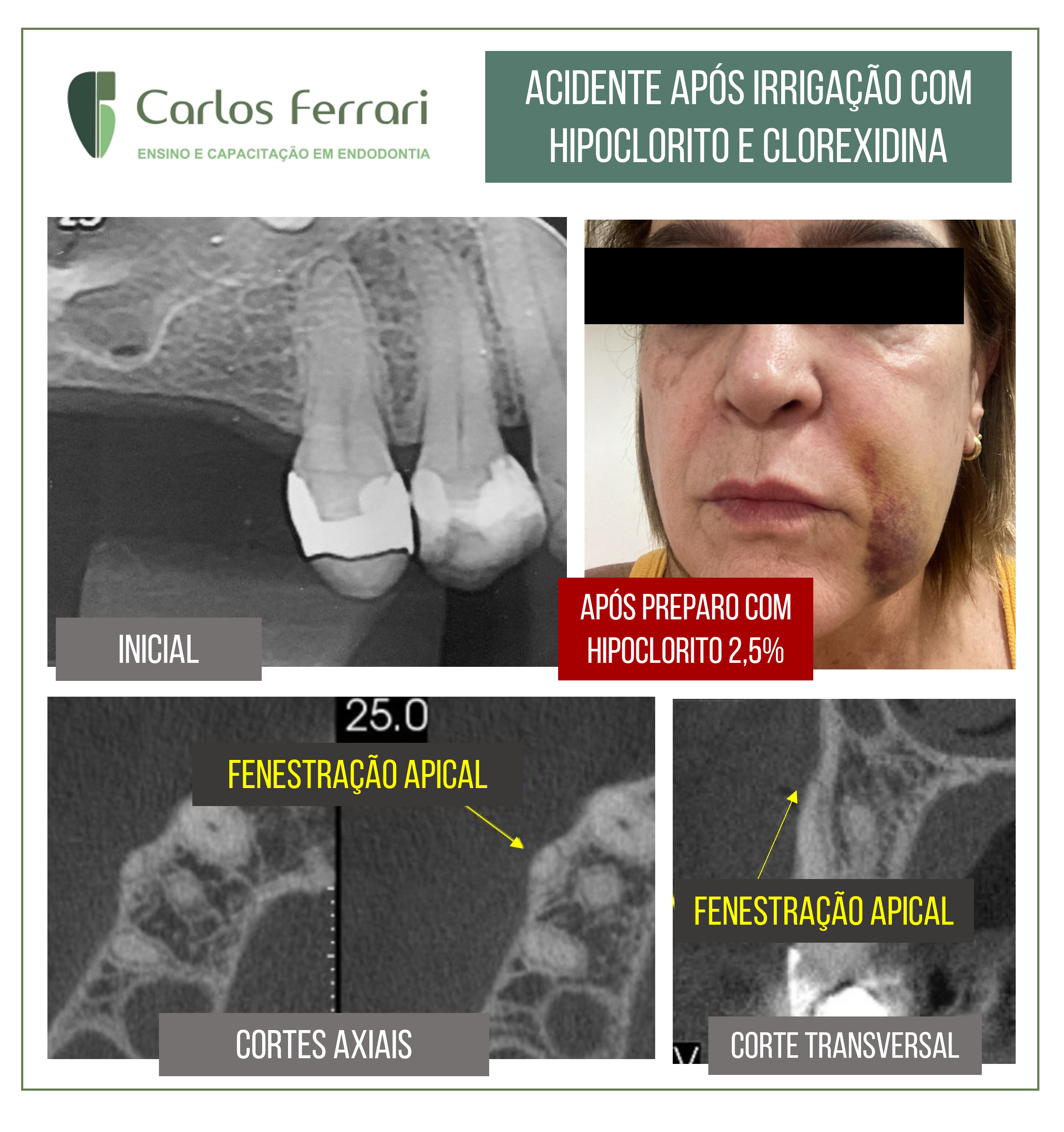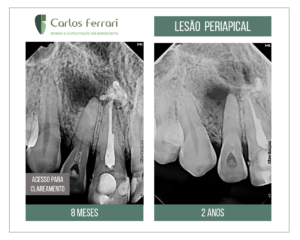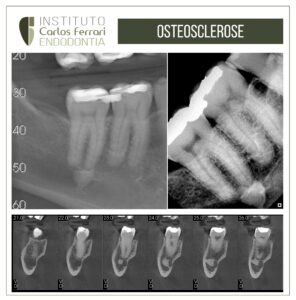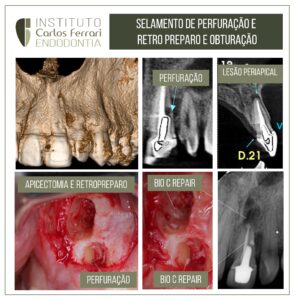Alguns acidentes durante a irrigação na endodontia são relatados na literatura e são observdos frequentemente em relatos de colegas. Caso em que houve um processo inflamatório agudo após a irrigação com ambas as substâncias mais comumente utilizadas para irrigação na endodontia. A literatura é farta em relação ao hipoclorito, mas mais escassa em relação à clorexidina, embora existente.
Paciente procurou a colega para tratamento de um dente 14 com finalidade restauradora. Durante a irrigação com hipoclorito de sódio 2,5%, houve forte dor na região apical do referido dente, fazendo com que a profissional suspendesse o tratamento, irrigasse abundantemente com soro fisiológico e colocasse medicação intracanal. Além disso prescreveu anti-inflamatório esteroidal e antibiótico.
Após uma semana e todos os sintomas regredidos, procedeu novamente irrigação durante o tratamento, com clorexidina gel 2%, e novamente dor, da mesma maneira já citada, com os procedimentos também repetidos.
Na 3ª sessão, foi então realizada irrigação com soro fisiológico e obturação, sem qualquer ocorrência.
Determinação de risco
O caso alerta para o risco de acidentes na irrigação endodôntica. Afinal, o risco parece estar mais associado à posição dos ápices em relação às tábuas ósseas, e consequentemente, tecidos moles. O quadro apresentado mostra os índices de risco, drasticamente maior nos dentes superiores. A posição apical, próxima da cortical externa da tábua óssea, ou até mesmo fora dela,em contado direto com o periósteo (fenestração apical), parece ser mais relevante para complicações do que a substância utilizada.
Nesses casos, é desejável a realização de tratamentos mais conservadores, com menores intervenções além do forame, principalmente em tratamentos com preparos com alargamento foraminal, muitas vezes realizados com calibres tip 35 ou até maiores. Portanto, a observação minuciosa do posicionamento dos ápices por meio de uma tomografia computadorizada é um recurso muito importante para a prevenção desse tipo de acidente.
Caso conduzido pela ex-aluna de especialização em endodontia Fernanda Furtado, da HPG Brasília.
